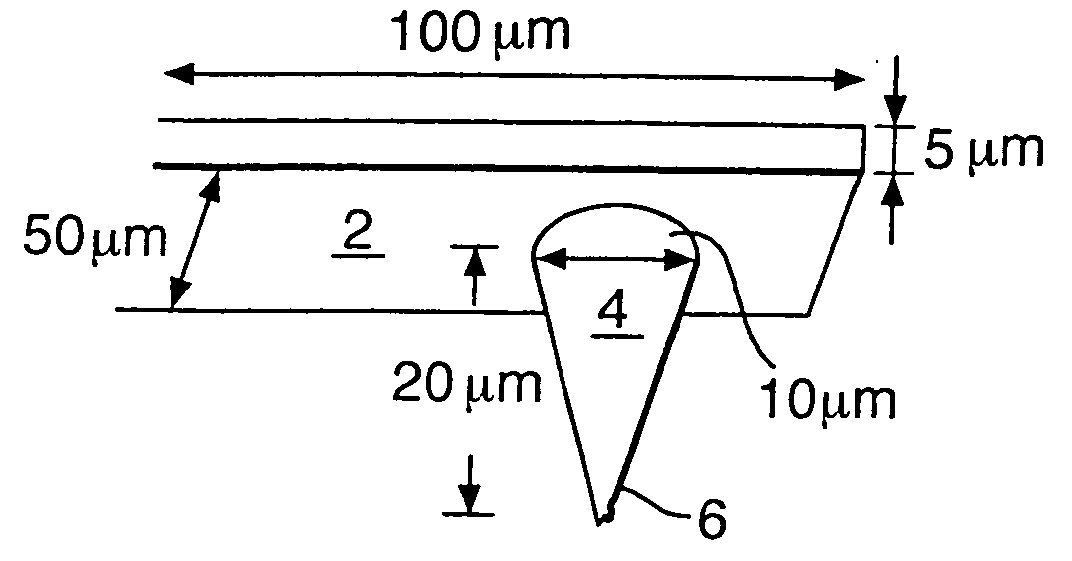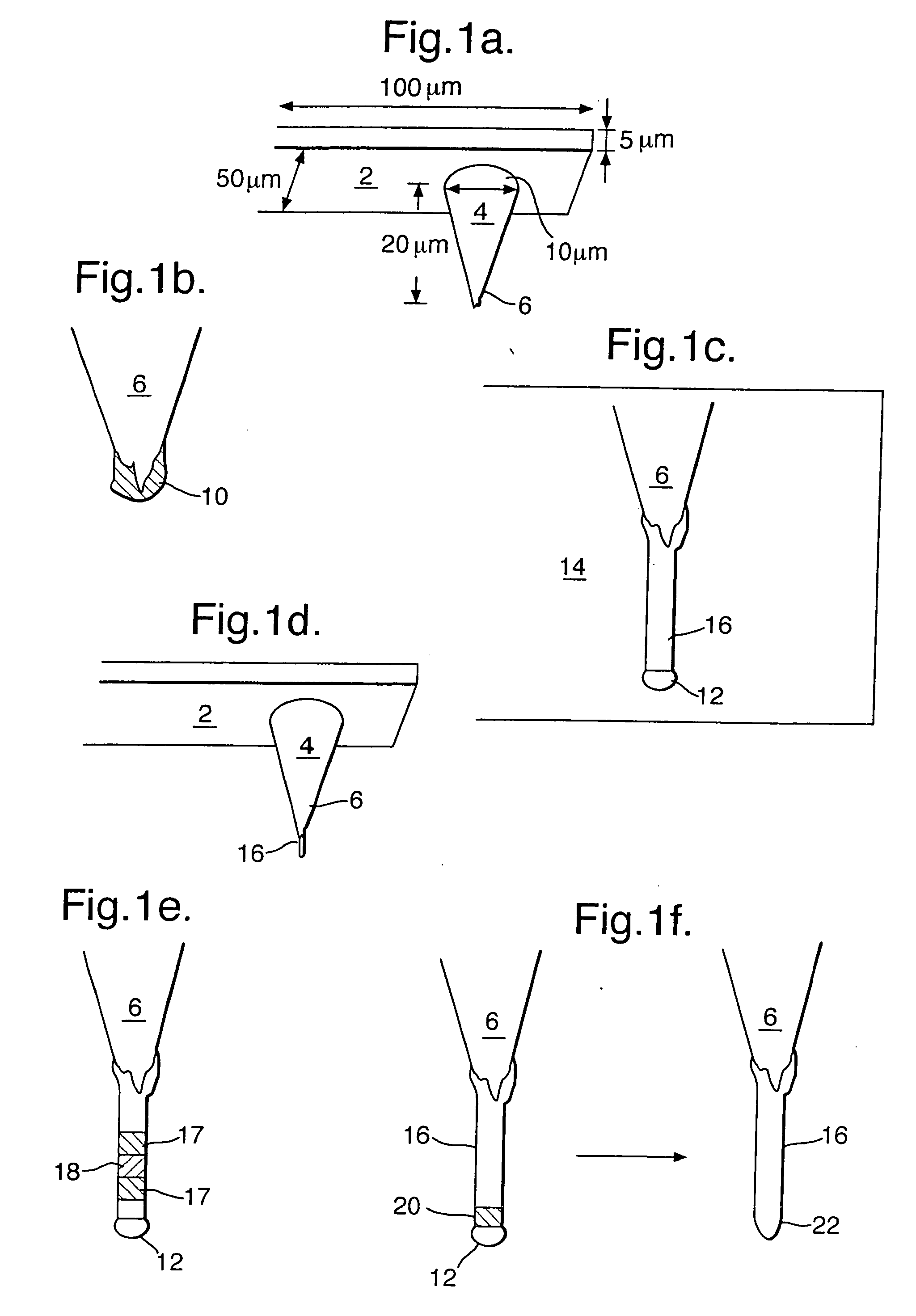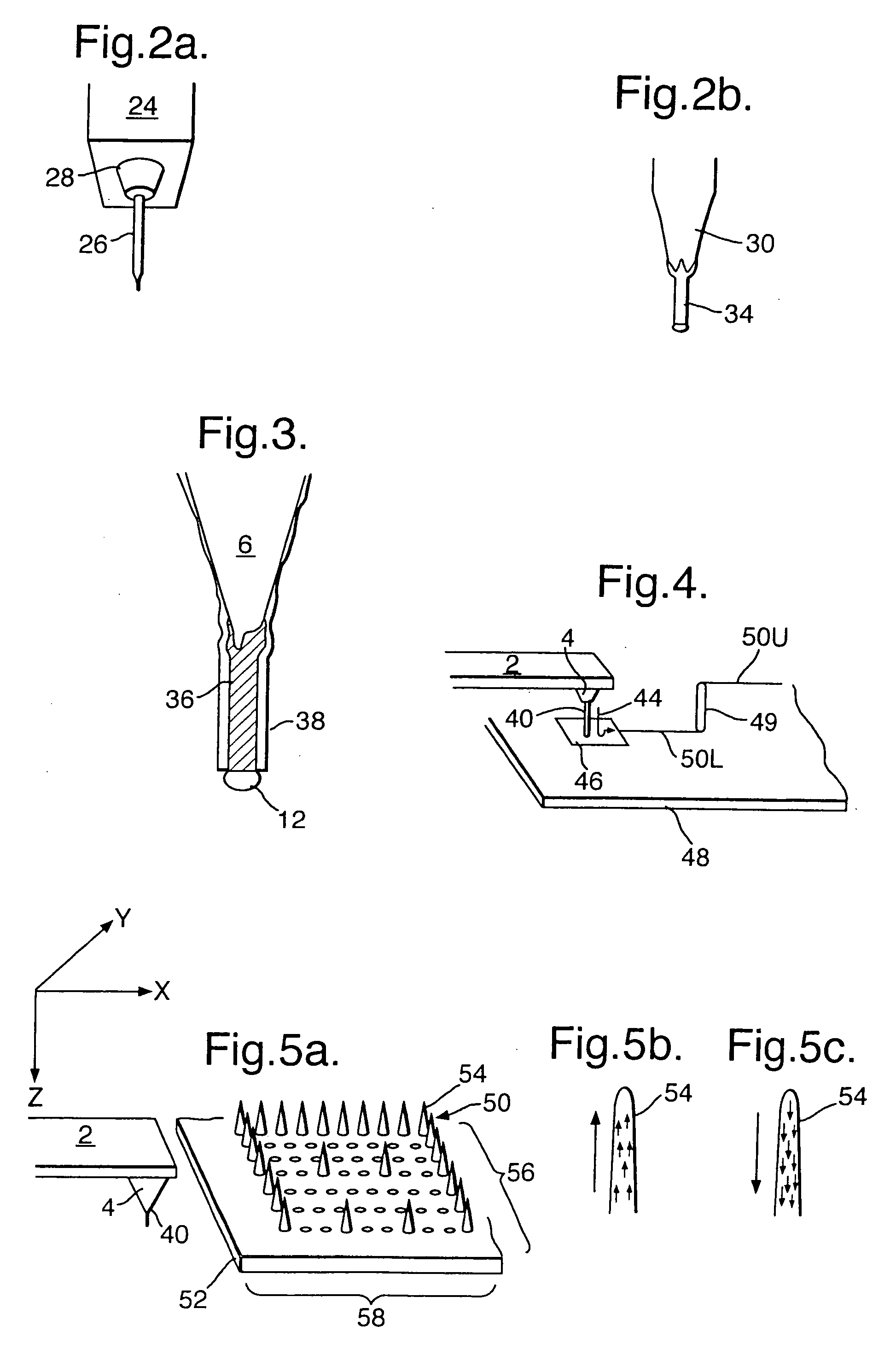Probe structures incorporating nanowhiskers, production methods thereof and methods of forming nanowhiskers
a technology of nanowhiskers and nanowires, which is applied in the direction of material analysis using wave/particle radiation, instruments, nuclear engineering, etc., can solve the problems of spm-tips suffering from the same limitation as conventional metallic spm-tips, and the efficient injection of spin-polarised electrons into spintronic devices, etc., to reduce the size of a ferromagnetic domain formed, reduce the symmetry of nanowires, and improve the curie temperature of magnetic semiconductor materials
- Summary
- Abstract
- Description
- Claims
- Application Information
AI Technical Summary
Benefits of technology
Problems solved by technology
Method used
Image
Examples
second embodiment
[0065]FIGS. 2 and 2b show a probe for an STM according to the invention. In FIG. 2a, a support 24 mounts an STM tip structure comprising a metallic wire tip member 26 held in a holder 28. The end of the wire 26, as shown in FIG. 2b, is tapered as at 30. A nanowhisker 34 is formed at the end, in accordance with the processes described above with reference to FIGS. 1b to 1g. Since STM applications usually require measurements of an atomic scale, the nanowhisker may have a very small diameter, at least at its tip, say 10 nm or less, or even less than 5 nm.
third embodiment
[0066] Referring now to FIG. 3, a third embodiment is shown comprising a tip structure of an AFM, with integral nanowhisker, where similar parts to those of FIG. 1 are denoted by the same reference numerals. A nanowhisker 36 is formed by the method described above. The whisker is formed of silicon and has a gold particle melt 12 at one end. Subsequent to formation of the whisker, the whisker is exposed to an atmosphere at a suitable temperature for oxidation of the silicon. This forms an outer shell 38 of silicon dioxide surrounding the whisker and extending along its length. The gold particle melt 38 remains in an unoxidised condition.
[0067] This therefore provides a structure highly suitable for precise examination of biological samples, since the region of interaction with the biological sample is very precisely defined. The nanowhisker 36, 38, 12 may be used, for example, to map properties of biological tissue in three directions of movement of the tip structure, X, Y, Z.
[0068]...
fourth embodiment
[0070] Referring now to FIG. 4, the invention is shown for use in the field of Spintronics. Spintronics is a technical field where the properties of electronic devices rely on the transport of electron spin through the device. In FIG. 4 similar parts to those of FIG. 1 are denoted by similar reference numerals. A whisker 40, formed at the end of the tip member 4, by the process described above, is of a magnetic material (MnInAs, MnGaAs, MnAs) or semimagnetic material, containing a dilute concentration of Mn. Under an applied voltage V, spin polarised electrons 44 are emitted from the tip of the whisker, which makes electrical contact with an electrical contact 46 disposed on a substrate 48. The spin polarised electrons 44 are injected by means of a tunnelling process into contact 46 and are then used for a desired function, such as reading the state of a magnetic memory element, such as nanopillar 49 disposed on substrate 48 and electrically connected by means of lower and upper ele...
PUM
 Login to View More
Login to View More Abstract
Description
Claims
Application Information
 Login to View More
Login to View More - R&D
- Intellectual Property
- Life Sciences
- Materials
- Tech Scout
- Unparalleled Data Quality
- Higher Quality Content
- 60% Fewer Hallucinations
Browse by: Latest US Patents, China's latest patents, Technical Efficacy Thesaurus, Application Domain, Technology Topic, Popular Technical Reports.
© 2025 PatSnap. All rights reserved.Legal|Privacy policy|Modern Slavery Act Transparency Statement|Sitemap|About US| Contact US: help@patsnap.com



